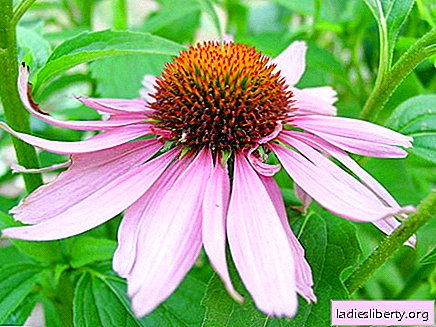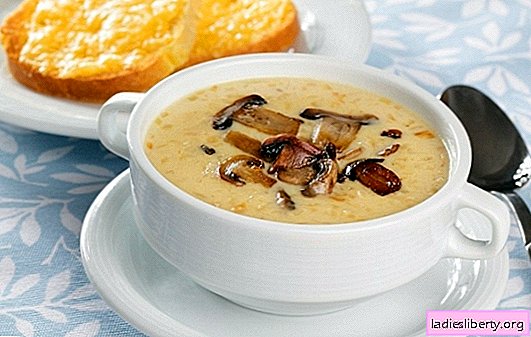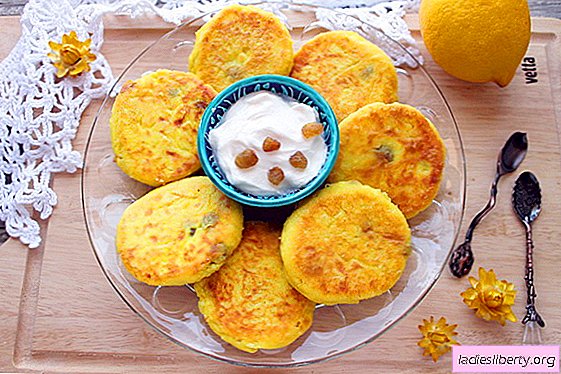
Echinacea - a general description
Echinacea - a herbaceous medicinal perennial of the aster family. The stems are erect, simple, reaching a height of 100 cm. The roots are branched with a large number of shoots penetrating the soil by 30 cm. The leaves are collected by a rosette, broad-lanceolate. Basal leaves are located on long petioles, stem - short-leaved.
Echinacea blooms all summer, delighting with flowers of bright colors. Fruits - brown tetrahedral achenes 5 mm long. Inflorescences have the shape of baskets 12 cm in diameter, located on the tops of the stems. The flowers in them are light or dark purple. Between the flowers on the receptacle are spiny bracts, painted in dark color.
Echinacea - types and places of growth
The genus Echinacea includes 9 species: Echinacea white, purple, narrow-leaved, Tennessee, paradoxical, bloody, stimulating, dark red and Echinacea neglect, whose natural habitat is North America. Secondary areas - Great Britain, Slovakia, Czech Republic, Hungary, Germany, Belgium, Spain, France, Greece, Poland. Echinacea is also found in other parts of the Eurasian continent: Estonia, Moldova, Ukraine, the North Caucasus, Bashkiria, and the Primorsky Territory.
The first mention in Russia dates back to 1779, but as a garden plant it began to be grown only in the 70s of the XX century.
Echinacea - healing properties
Echinacea polysaccharides affect the activity of blood cells, stimulating the production of T-lymphocytes, which prevents the development of diseases and prevents the spread of viruses and bacteria. Polysaccharides surround cells and actively resist the negative effects of pathogenic flora. This is the regenerative and immunostimulating effect.
Caffeic acid glycosides inhibit the enzyme hyaluronidase, thereby causing an analgesic and anti-inflammatory effect. Echinacea has a fungicidal, virologostatic effect, stimulating the production of necessary hormones, the plant has an antirheumatic and anti-allergic effect.
Indications for use are frequent colds, bladder diseases, blood poisoning, ear infections. Outwardly used to treat wounds, furunculosis, abscesses, burns, urticaria, herpes, insect bites.
Echinacea drugs are effective in diseases caused by the negative effects of ultraviolet radiation, radiation, chemicals, antibiotic therapy. Echinacea extract inhibits the activity of staphylococci, streptococci, Escherichia coli, influenza viruses, stomatitis, herpes.
Echinacea - dosage forms
As medicinal raw materials used leaves, stems, flowers and rhizome. Flower baskets are harvested in August, rhizomes - in October-November. When harvesting grass, it is necessary to tear off freshly bloomed samples. Dried in the shade. Shelf life is 6 months.
At home, infusions are prepared from crushed raw materials, decoctions are made from dried roots, and tinctures are made from fresh rhizomes.
Echinacea - recipes
The broth will help with joint, headaches, stomach ulcers, edema. The drug improves vision, improves mood, appetite, normalizes blood pressure: 1 tsp. fresh or dry leaves / 1 cup boiling water. Insist 20 minutes. Drink 1/3 glass 3 times a day.
Alcohol tincture is effective for prostate adenoma, inflammatory processes of the female reproductive system, gastritis, constipation, vasospasm. The crushed roots are poured with vodka or alcohol in a ratio of 1:10. Insist 10 days. Take 30 drops 3 times a day before meals.
Infusion will increase efficiency, relieve fatigue, increase immunity: 30 gr. flowers / 0.5 l. boiling water, boil for 10 minutes. Insist 5 hours, strain. You can add honey, sugar, berry syrup. Take ½ cup 4 times a day.
Echinacea - contraindications
The decision to take Echinacea drugs should be agreed with your doctor. Contraindications: pregnancy, breast-feeding, multiple sclerosis, leukemia, collagenosis, tuberculosis, AIDS, individual intolerance.
When consumed for more than 2 consecutive months, the depletion of the immune system is noted, therefore, it is recommended that courses be taken for 2 weeks.











